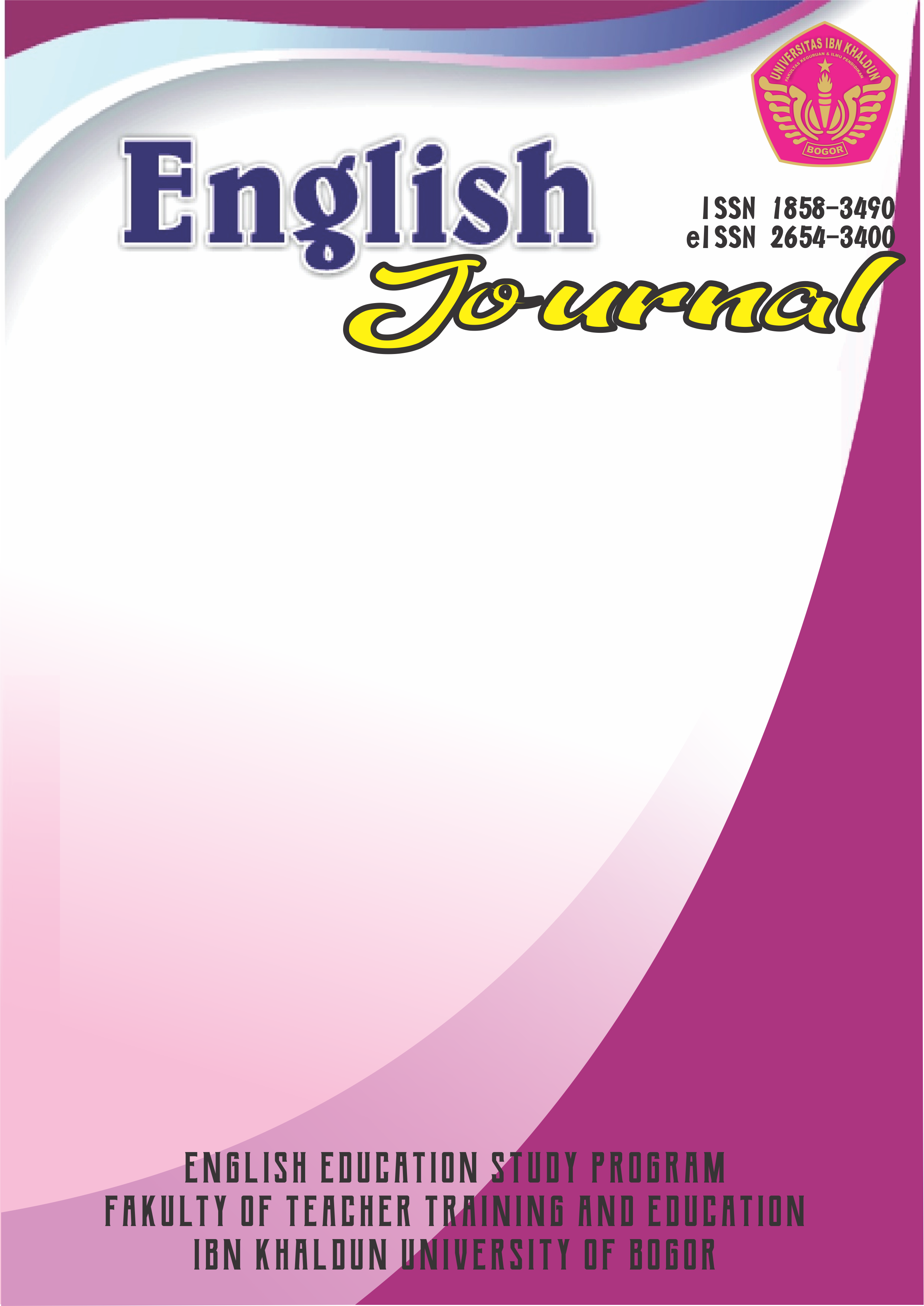IMPLEMENTING QUESTION-ANSWER RELATIONSHIPS (QAR) STRATEGY TO IMPROVE STUDENTS' READING COMPREHENSION SKILL
DOI:
https://doi.org/10.32832/english.v13i2.3832Abstract
This action research was conducted to highlight how far the improvement of students' reading comprehension skill after being treated by implementing QAR strategy and to find out the advantages when QAR is implemented in teaching reading comprehension. The research was organized at SMA Negeri 1 Rangkasbitung, Lebak - Banten. The subject of the research was the eleventh grade students, class IPS3. The design of it was an action research by covering three cycles, and every cycle consists of five meetings. Planning, acting, observing, and reflecting were implemented in every cycle to get a clear data. The research applied two sorts of data collecting: qualitative and quantitative data. Observation, recording, and interview were conducted to obtain qualitative data, while the quantitative data was gained through test. The research finding reflected that implementing Question-Answer Relationship (QAR) Strategy can help students in comprehending the text while answering the questions. The students were able to categorize the questions as well to avoid spending too much time while finding the answer. The implementation of QAR Strategy in teaching-learning process was getting better cycle to cycle, the students were energetic, active, enthusiastic, and felt much more confident to take a part in reading learning activity eventually. It showed that teacher's teaching strategy had positive impact to students' reading comprehension, and could arouse students' motivation and participation as well to learn which greatly influenced their reading comprehension skill. It is helpful for teacher as a framework for directing questioning activities and comprehension instruction in pre-, while-, and post-reading. Implementing QAR in reading comprehension can ensure that it does not only focus on lower-level skills and question but in high level as well and it can motivate students to think critically and creatively. Considering QAR is helpful and beneficial for both teacher and students, the institution may implement QAR for any grades and school subjects in order to make students familiar with higher-level question. Therefore, it will be no longer difficult to comprehend the text for students who have been treated by implementing QAR.
References
Aebersold, Jo Ann & Field, Mary Lee. fromReader to Reading Teacher: Issues and Strategies for Second Language Classrooms. Cambridge: Cambridge University Press, 1997.
Brown, H. Dauglas. Principles of Language Learning and Teaching.New York: Addison Wesley Longman, Inc.United States of America: Longman, 2000.
_______________. Teaching by Principles: An Interactive Approach to Language Pedagogy. New York: Addison Wesley Longman, Inc.United States of America: Longman, 2007.
_______________.Language Assessment: Principle and Language Practice. United States of America: Longman, 2004.
Burns, Anne. Collaborative Action Research for English Language Teachers.United Kingdom: Cambridge University Press, 1999.
Conner, Jennifer. Instructional Reading Strategy: QAR (Question/Answer Relationship). Available at: http://www.Indiana.edu/isit/QARhtml.
Cole, P. and Chan, L.K. Methods and strategies for special education. Sydney: Prentice Hall, 1990
Cline, F.Johnstone, C., & King, T. National Accessible Reading Assessment Projects, University of Minnesota: Elliott Hall, 2006.
Grabe, William &Fredricka L. Stoller.Reading for Academic Purposes: Guidelines for the ESL/EFL Teacher. United States of America: Heinle&Heinle, a division of Thomson Learning, Inc, 2001.
Harmer, Jeremy. How to Teach English.New Edition. England: Longman, 2007.
Harmer, Jeremy. The Practice of English Language Teaching: Third Edition Completely Revised and Updated. Essex: Longman, 2001.
Klingner Janette K, Sharon Vaughn & Alison Boardman..Teaching Reading Comprehension to Students with Learning Difficulties. New York: The Guilford Press, 2007
Kemmis, S. &McTaggart, R.The Action Research Planner, Victoria: Deaken University Press, 1992
McKernan, J. Curriculum and imagination: Process theory, pedagogy and action research. New York: Routledge, (2008).
Mills, G.E..Action Research: A Guide for the Teacher Researcher. New Jersey: Prentice Hall, 2000.
Nunan, David. Cooperative Language Learning and Teaching.Cambridge: Cambridge University Press, 1992.
___________.Practical English Language Teaching.New York: Mc. Graw Hill, 2003.
Nuttal, Christine. Teaching Reading Skill in a Foreign Language.Second Edition, Oxford: Heinemann, 1996.
Raphael, Taffy E. & Au, Kathryn."QAR: Enhancing Comprehension & Test Taking Across Grades and Content Area.” 2005. The Reading Teacher. Vol. 59, No. 3 November 2005.
Raphael, Taffy E. & Pearson, P. David."Increasing Students' Awareness of Sources of Information for Answering Questions.”1985. American Educational Research Journal. Summer 1985, Vol. 22, No.2, Pp. 217-235.
Readence.J.E. Question-Answer Relationship.(QAR) University of Nevada, Las Vegas, 2006.
Richards, Jack C. Reflective Teaching in Second Language Classrooms.New York: Cambridge University Press, 1996.
Richards, Jack C. & S Roger, Theodore.Approaches and Method in Language Teaching.Cambridge: Cambridge University press, 2002.
Snow, Cahterine. Reading for Understanding: Toward an R&D Program in Reading Comprehension. Santa Monica, CA: RAND, 2002.
Stahl, Katherine A. Daugherty. Proof, Practice, and Promise: Comprehension Strategy Instruction in The Primary Grades. The Reading Teacher. Vol. 57, No. 7 April 2004.
Urquhart, A. H., & Weir, C. J. Reading in a second language: Process, product, and practice. London and New York: Longman, 1998.
William, Eddie.Classroom Reading Through Activating Content-based Schemata.1987. Available at:flrc.hawaii.edu/rfl/PastIssues/rfl41williams.pdf.

















1.png)




